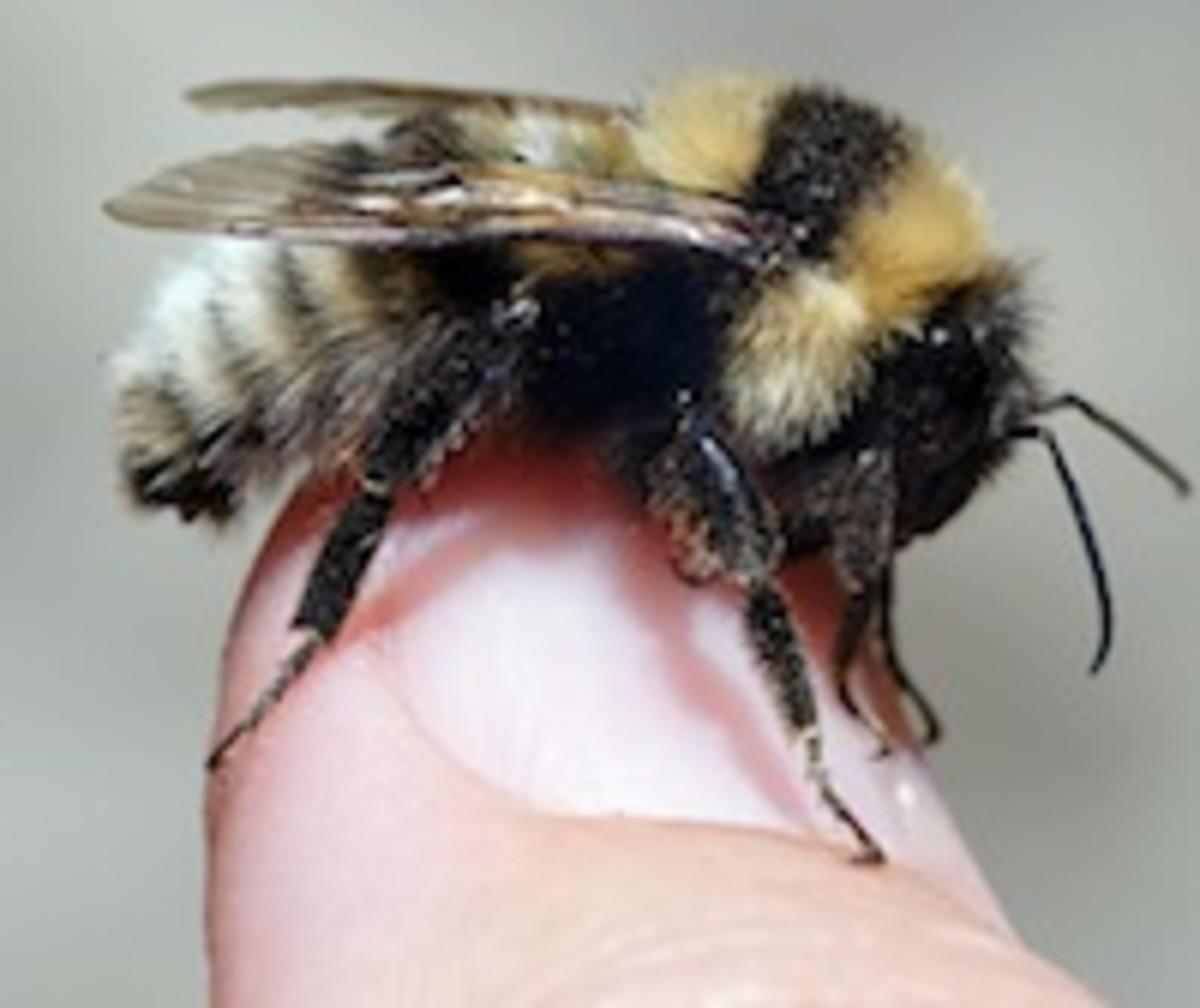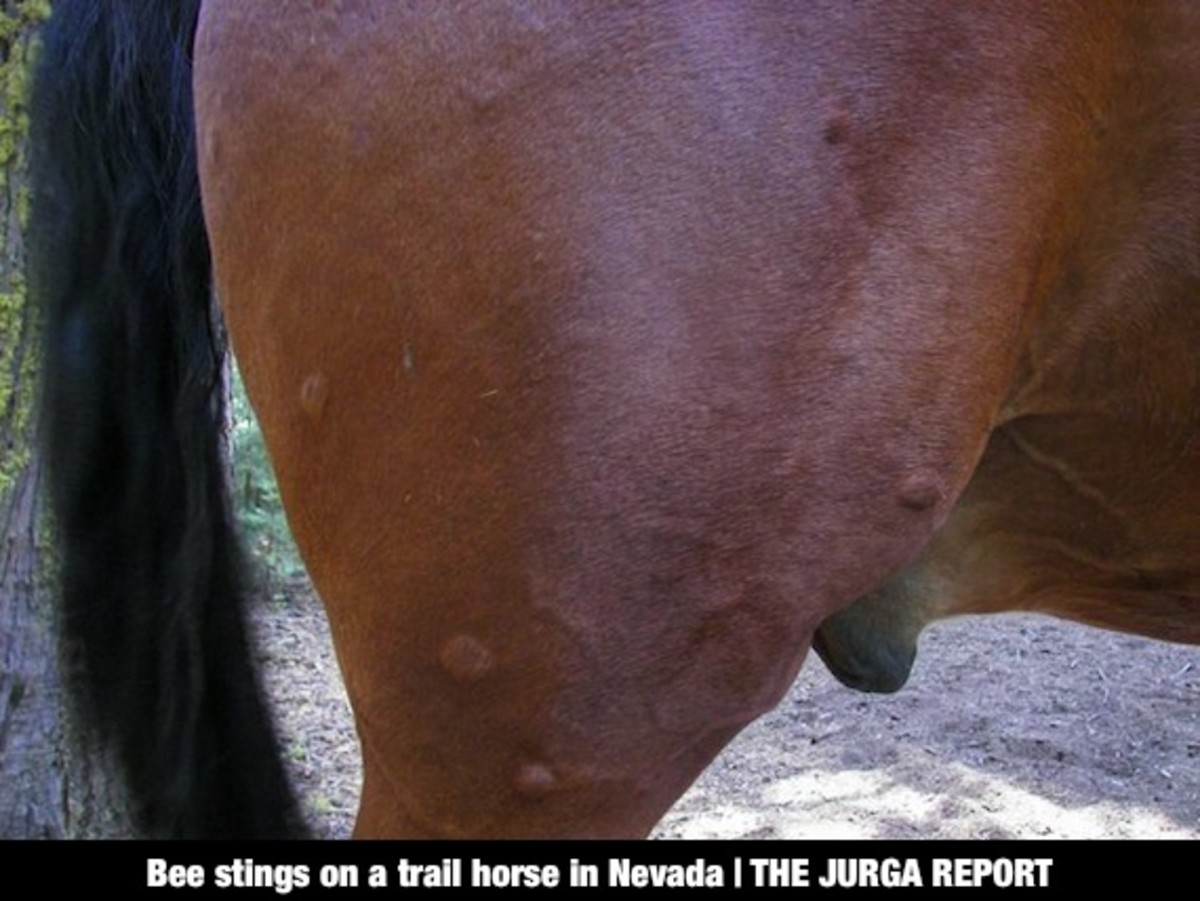Plan Bee: 16 Things You Can Do About Bees Around Horses
- March 10, 2017
- ⎯ Fran Jurga
[VIDEOSINGLE type=”youtube” keyid=”IiwRSzCEyMI”, width=”560″, height=”344″]
Everyone has a bee story, but no one can match Kristen Beauregard’s. Her incredible story about an attack on her and her horses by thousands of bees in Texas this summer made the news. Its tragic ending also made many of us think.
How can you ever forget the time a yellow jacket got closed inside your trailer? Bzzz. The time your horse stepped in a ground bee nest on the trail? Bzzz. The time the hornets built a nest in your horse’s stall when he was gone at a show? Bzzz. And those bees that come back in the big pasture every fall? Bzzzz?.run!

There are probably many, many more bee stories out there than any of us know. When a normally quiet horse suddenly bucks and runs, when a placid pasture herd erupts into frenzied stomping, rearing and galloping, and when you come into the barn to find a stall’s walls kicked and a horse with odd welts, you can at least guess that bees might be at the root of the problem.
[VIDEOSINGLE type=”youtube” keyid=”SxeGgHcIIn4″, width=”560″, height=”344″]
This video tells the horrible story of a trail ride that no one on it will ever forget. It has some good advice.
Bees are often unavoidable. They are part of nature. But you can learn that they seem to be more active as the days grow shorter in the fall. You can learn about the types of bees and wasps that are common in your area, especially if there is any chance that there are any killer bees or Africanized honeybees in the area. And you can follow these tips to help you deal with bees’ nests and bees themselves when and you encounter them.
1. Know the property where your horse lives. Check under eaves and in haylofts for nests, regularly. When the hay truck arrives is not the time to discover a nest of wasps in the loft. Always be careful going into an abandoned building or putting your horse into a stall that hasn’t been used in a while.
2. Buy bee and wasp spray and learn to use it. Have it on hand, store it properly. Instructions will tell you what time of day to use it, and how far away to stand.
3. Learn the difference between bees and wasps, and take note of honeybees. Is there a beekeeper in your area? Stop and introduce yourself and take a look at a hive. If there is ever a swarm of honeybees near your horses, you will need to call someone, and a local beekeeper will know who to call.

4. Walk your horse’s pasture regularly and look for bees and anthills and any other natural irritants who might bother your horses. If you have a large pasture with wet land, wait until it dries out in mid-summer. Insect activity will change between the seasons. On a sunny afternoon, look between stones and in low tree branches. Listen for a buzz. Wasp nests come in all shapes and sizes.
5. Stock your saddlebag or tack trunk with bee supplies. Some trail administrators ride out to look for bee nests and spray them; they can also note the location and warn riders at trailheads. Riders should carry bee sting first aid supplies for horses and humans with them.
6. Consider some Benadryl for humans, and look for the latest, greatest bee sting remedy at your drugstore. Ice is an ideal treatment for horse and rider stings. Check with your vet for the best first aid products currently available. You’ll want to start cold-hosing your horse’s stings as soon as possible and possibly icing them, depending on the area. Call your vet immediately and ask for instructions.

7. Learn about bee stingers in bees in your area. Do the bees leave the stingers behind? Should they be pulled out or flicked off or left alone? Again, ask your vet for advice.
8. Dress to keep bees away on the trail. Wear light-colored clothes and switch to a light-colored helmet cover. And forego perfume and scented shampoo for you and your horse. For some reason, bees and wasps seem to be attracted to dark colors and, more understandably, flowery scents. Remember that if you get a bee inside your shirt, the only way to deal with it is to take your shirt off, no matter where you are, even in a warmup ring–so plan your layers accordingly.
9. Consider sprays. Do repellents works? Some riders swear by them. “Bee Ready” from Giddyap Girls is a patented natural product that may be helpful on the trail if you’re worried about bees; it is designed for horses and riders.
10. Be ready to shout. If you’re on the trail and your horse is stung, shout “BEES!” to warn other riders. Talk about bees before you head out; if you hear a bee shout, do not ride in the direction of the voice shouting; turn and ride away. Have a plan with your fellow riders where and how to meet up in the event of a bee attack.
[VIDEOSINGLE type=”youtube” keyid=”CzC4oYHV9Sw”, width=”560″, height=”344″]
11. Call for help. Riders and horses can be injured when a horse panics after being stung. Remember that bees can chase a horse. Be prepared for this type of situation with cell phones or alternate communication plans. If you are thrown and not injured, get up and run.
12. Dismount. Aren’t you glad you can get on and off your horse in a hurry without a mounting block? If you want to help a fallen rider who is injuredbut near a nest, don’t approach on horseback; approach on foot while someone holds your horse far from the nest. Don’t swat or fan the air.
13. Vist the pharmacy once a year. If you are allergic to bee stings, carry an injection pen when you ride. Make sure that the pen is not past its expiration date and that you know how to use it. Tell your companions that you are allergic to bees.
14. Observe and remember your horse’s common paddock behavior. Horses commonly stomp at flies but agitated stomping and head tossing might mean that he’s being bothered by bees.
15. Inspect your trailer carefully before you load a horse, every time you use it. Bees may have moved in. Check the vents and the hitch area as well as the interior.
16. Examine the stable area or trailer park at a showground before you set up camp and unload your horses and trunks. Empty stalls are perfect nest sites and your arrival may upset a horde of wasps.?When you tie your horse to a trailer, keep in mind that you might need to untie him in a hurry. If you see bees, notify show management and other exhibitors.
And finally: Remember that we need honeybees. Be nice to them. They’ve been having a tough time lately, and they are probably not the bees that are going to bother your horse. Don’t strike out angrily against all bees, but protect your horse–and yourself–when and if you can, to avoid harmful situations.
Bee safe!
Photo thanks to Central Sierra Nevada Horse Trails and Nutmeg Nature Photography.





